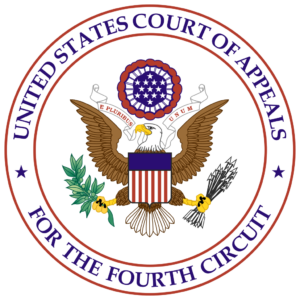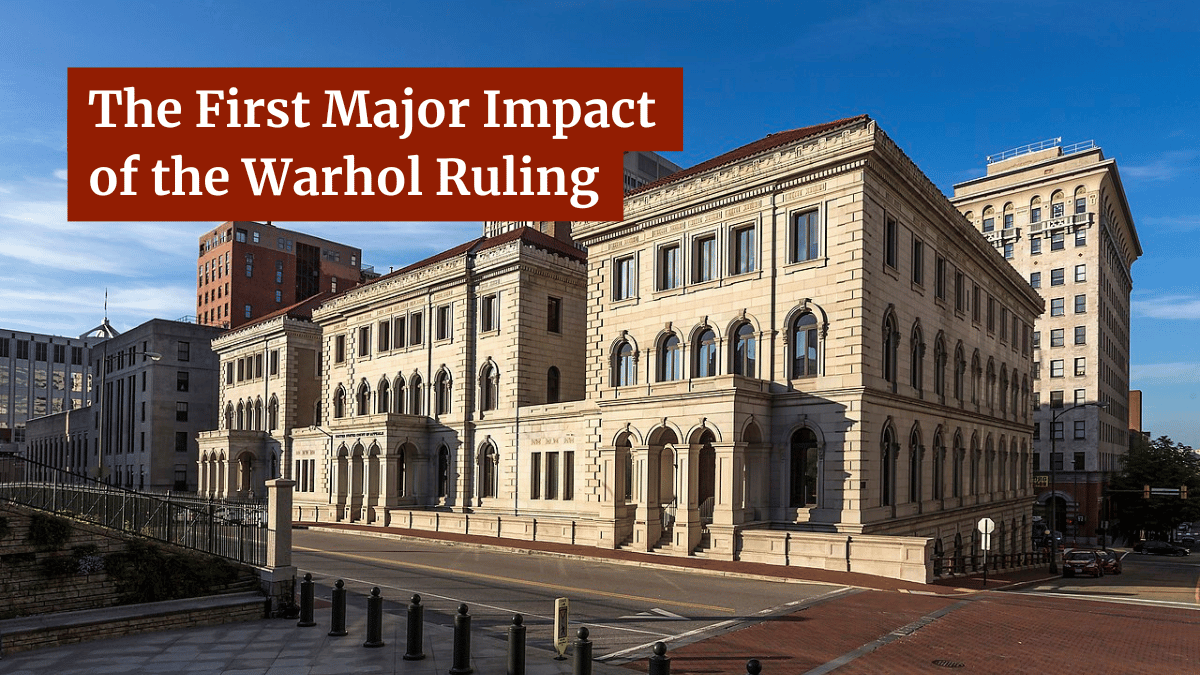The First Major Impact of the Warhol Ruling

The case, which pitted the photographer Lynn Goldsmith against the estate of artist Andy Warhol, looked at whether a painting of the musician Prince was a fair use of the photographer’s image. The court, ultimately, found that it was not and, in doing so, handed down what is likely the most important fair use decision in thirty years.
That decision likely has significant implications for artificial intelligence, but many felt the first major case (at least from a mainstream news standpoint) to likely be altered by it would be the recent Kat Von D ruling, which looks at using a photograph as the basis for a tattoo. However, that ended up not being the case following a head scratching jury verdict that did not even examine the fair use issues. While they may be addressed on appeal, it ended up not being the banner moment for the Warhol ruling many expected.
Instead, a decision this week from the United States court of Appeals for the Fourth Circuit may wind up being the biggest indication of how the Warhol ruling will affect other fair use cases, especially when you put the Appeals Court post-Warhol decision against the District Court’s pre-Warhol decision.
It is a simple case that ties directly into both the Warhol ruling, the broader concept of fair use and, oddly enough, yesterday’s article about how to use images from Wikimedia Commons legally.
To understand why, we must first look at the basic facts of the case and see why the Warhol case impacted it so heavily.
Background of the Case
In July 2013, photographer and plaintiff Larry Philpot took a photo of musician Ted Nugent at a concert in Indiana. The next month, Philpot filed a copyright registration for the photo along with a collection of other unpublished images. Sometime later that year, he uploaded the image to Wikimedia Commons, where he made the photo free to use provided that correct attribution was applied.
In March 2016, the Independent Journal Review (IJR) used the photo as part of a list article entitled 15 Signs Your Daddy Was a Conservative. However, the IJR did not publish the required attribution for the photo, instead including a link to the Wikipedia entry, prompting the lawsuit.
This prompted the original lawsuit, which was filed in May 2020. However, the District Court judge took a dim view of Philpot’s arguments. In an August 2021 decision, the judge granted a motion of summary judgement to the IJR, finding that their use of the photograph was transformative because it, “Employ[s] the quoted matter in a different manner or for a different purpose from the original, thus transforming it.”
As such, by simply placing the photo in an article that mentioned Ted Nugent, which was not the original context, the use was fair use. The court also noted that Philpot lost a similar case in 2018 the same way and on the same grounds.
Philpot appealed the summary judgment, and the case was heard before the Fourth Circuit Court of Appeals in October 2023, with the decision coming down yesterday.
That decision represents a complete reversal of fortune for Philpot. Where the lower court found that IJR’s use was a fair use as a matter of law, the Appeals Court found the opposite, that it was not a fair use as a matter of law.
The appeals court also granted Philpot summary judgement on an issue involving the registration, which means that it ruled that both of IJR’s main defenses are invalid and remanded the case back to the lower court.
It is a significant win for Philpot and photographers in general. However, it likely wouldn’t have been possible without the Warhol ruling and, when looking at the decision, it is easy to see why.
Why Warhol Was the Difference
To understand why the Warhol decision matters so much in this case, one only must look at a single fact: The Fourth Circuit’s decision mentions “Warhol” ten times and even directly cited it as providing “helpful guidance.”
However, by far the most damning section is one single paragraph:
Like the magazine’s use of Orange Prince in Warhol, IJR’s use of the Photo was not transformative. Here, as in Warhol, Philpot took the Photo to capture a “portrait” of Nugent, and IJR used the Photo to “depict” the musician. Accordingly, the two uses “share[d] substantially the same purpose.” Indeed, IJR has less of a case for “transformative” use than the Andy Warhol Foundation did in Warhol. Unlike the orange dubbing in that case, IJR did not alter or add new expression to the Nugent Photo beyond cropping the negative space:
Philpot v. Independent Journal Review
In short, the court directly compared the use of the photo to the Warhol case and found that IJR’s position on fair use was significantly worse than the Warhol estate’s due to the lack of added expression. In short, there was no way they could find in favor of the IJR in this case.
This sits in sharp contrast to the district court opinion, which takes a very generous view on transformativeness and, to that end, cites a 2009 Fourth Circuit case saying, “A ‘transformative’ use is one that employ[s] the quoted matter in a different manner or for a different purpose from the original, thus transforming it.”
It goes on to say that transformative works are rarely infringements because, “the goal of copyright, to promote science and the arts, is generally furthered by the creation of transformative works.”
The result is that, in the original decision, the lower court cited the Fourth Circuit in both granting a broad definition of what constitutes a transformative use and then in weighing such transformation strongly in favor of the defendant.
Following the Warhol case, the Fourth Circuit is not only narrowing what constitutes transformative use, saying that both the photographer and the IJR were trying to “depict” Ted Nugent, but also narrowing the impact of transformative use, clearly highlighting how the other three factors weigh against fair use as well.
The district court, by contrast, did not even analyze two of those three other factors, instead focusing almost entirely on the question of transformativeness.
The Warhol verdict represented a major turning point in this case, and it is a turning point that creators and rightsholders need to be very aware of moving forward.
Bottom Line
Whenever a major Supreme Court decision like Warhol ruling is handed down, one of the first questions that must be asked is “How will the lower courts apply it?”
To be clear, there have been other court decisions that cited Warhol. However, at this point, they’ve all been district court rulings. Here we have an Appeals Court, not only heavily citing Warhol, but using the decision to overturn both a lower court decision and reverse some of their own past judgments.
If you needed evidence that the Warhol ruling represents a major shift in fair use, this is as clear of an indication that you are going to get. It is easy to see the divide between the pre-Warhol world and the post-Warhol world in this one decision.
This ruling is especially likely to worry AI companies. As we discussed last year, they were (and still are) heavily relying on a broad fair use defense that seemed to be punctured by the Warhol decision.
This latest decision proves that is the case. SCOTUS spoke very loudly with the Warhol decision and now it is clear the lower courts are paying attention. If I were an AI company, I would find this decision very worrisome. While it hardly guarantees success by plaintiffs, it does make the path to a successful defense much more dubious.
Clearly, this is going to be an issue to watch for a long time to come. But if these early cases are any indication, it is obvious which way the arc is bending.
Header Image: Acroterion, CC BY-SA 3.0, via Wikimedia Commons
Special Thanks: Stephen Carlisle, the Copyright Officer at Nova Southeastern University, for bringing this ruling to my attention.
Want to Reuse or Republish this Content?
If you want to feature this article in your site, classroom or elsewhere, just let us know! We usually grant permission within 24 hours.
